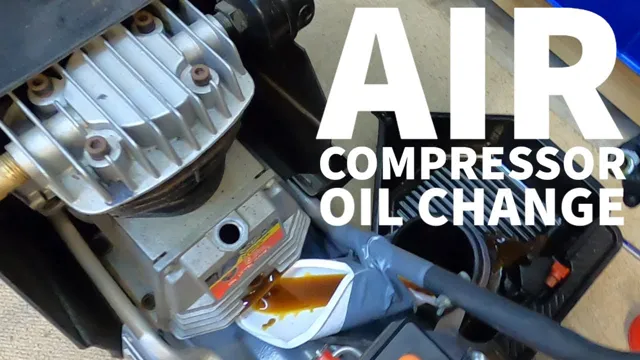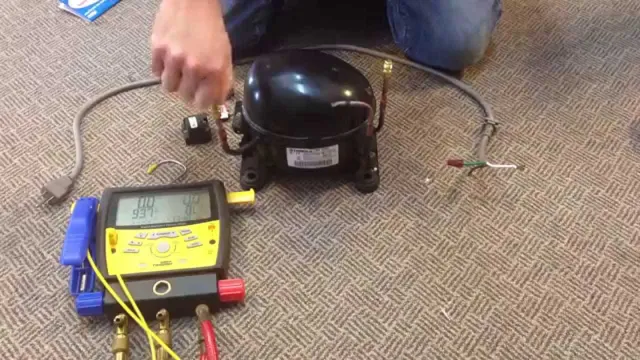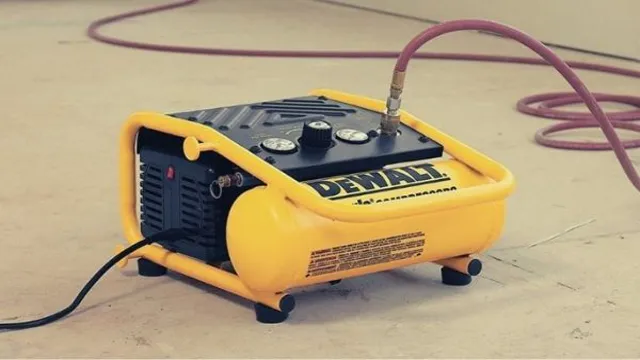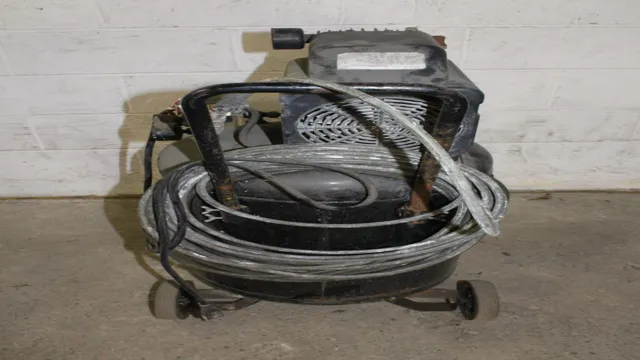How to Remove Moisture from Air Compressor: Tips and Tricks for Effective Moisture Removal
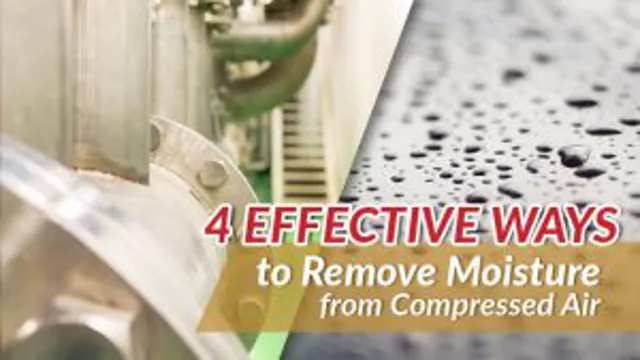
Have you ever noticed that your air compressor produces wet and damp air even after you’ve drained its tank? This is caused by the presence of moisture, which is a common problem in air compressors. Moisture buildup can lead to rust, corrosion, and other damages to your equipment, which can significantly impact the performance of your air compressor. Fortunately, there are ways to remove moisture from your air compressor to prevent these costly damages.
In this blog, we’ll discuss the different ways to remove moisture from your air compressor, including using filters, desiccants, and refrigerated dryers. Let’s dive in and explore the most effective ways to keep your air compressor running smoothly and prevent moisture-related damages.
Understanding the Importance of Moisture Control
Air compressors are valuable tools that are used in a variety of industries to power machines and tools. Moisture inside an air compressor can cause issues such as rust, erosion, and reduced efficiency of tools. That’s why it’s essential to learn how to remove moisture from your air compressor.
There are several ways to achieve this, such as using a moisture trap, draining your compressor’s tank regularly, installing a refrigerated air dryer, or using a desiccant air dryer. However, the most effective method is to use a combination of these solutions. By doing this, you will ensure that your air compressor runs smoothly and safely, reducing the risk of damage to your equipment and workspace.
So, if you’re wondering how to remove moisture from your air compressor, invest in a certified solution or a professional technician that can guide you through the process. It’s a small investment that will save you time, money, and protect your investment in the long run.
Effects of Moisture on Air Compressors
Air Compressors, Moisture Control Air compressors are an essential piece of equipment for a variety of industrial applications, and maintaining their efficiency is critical for sustainability and profitability. Moisture, if left uncontrolled, can cause a plethora of problems, making moisture control imperative. Moisture can accumulate in compressed air systems due to various reasons, such as temperature differences, atmospheric humidity, equipment malfunctions, and more.
Moisture can cause severe damage to air compressors, such as rusting, corrosion, reduced efficiency, and damage to pneumatic tools. The key to effective moisture control is to identify the source of the problem and implement appropriate solutions. One of the most effective methods is to install high-quality air dryers to remove excess moisture from the compressed air.
Proper maintenance of the air compressors is also critical to prevent moisture build-up. With the implementation of the right moisture control measures, air compressors can operate at optimum levels, ensuring long-term reliability, and reduced maintenance costs.
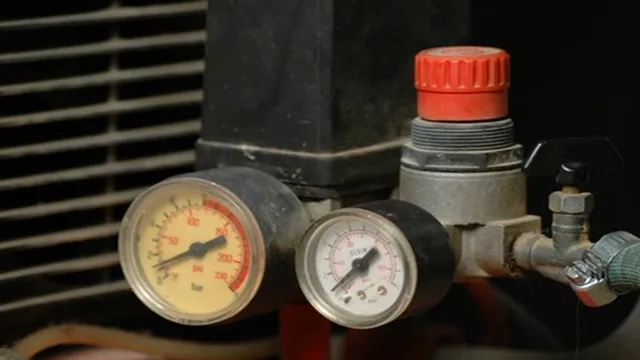
Benefits of Removing Moisture from Air Compressors
Air compressor systems are integral components of many industrial processes, but they come with some challenges. One of the biggest challenges is dealing with the moisture that naturally builds up during the compression of air. This moisture can lead to a host of problems, ranging from corrosion and rust to decreased efficiency and increased operating costs.
By removing this moisture from the compressed air, businesses can improve the lifespan of their equipment and ensure reliable performance, ultimately leading to cost savings. To achieve this, a range of solutions are available, from desiccant air dryers to refrigerated dryers. With the right moisture control system in place, businesses can mitigate the negative effects of moisture build-up and enjoy the full benefits of their air compressor systems.
Identifying the Source of Moisture in Air Compressor
Removing moisture from an air compressor is essential to ensure your compressor operates optimally. The first step to remove moisture is to identify the source of moisture, which could be the humidity in the ambient air or condensation that forms in the compressor tank. One solution to address the moisture in the ambient air is to install an air dryer to cool and condense the moisture before it enters the compressor tank.
This can significantly reduce the amount of moisture that accumulates in the compressor tank. Another solution is to drain the tank regularly, particularly in humid conditions, to remove any accumulated condensation. Investing in a quality moisture filter is another option to consider.
It is important to keep in mind that reducing moisture in the compressor is vital to ensure longevity and dependable performance. Regular maintenance and inspection practices are crucial in detecting and addressing any moisture build-up issues.
Types of Moisture in Air Compressors
Air compressors are widely used in various industries, but they are prone to producing moisture, which can affect their overall performance and efficiency. There are three types of moisture that can accumulate in an air compressor: condensate, ambient moisture, and lubricant-based moisture. The most common type is condensate, formed when hot compressed air cools down and starts to condense into liquid.
Ambient moisture is caused by air entering the compressor, bringing with it moisture from the surrounding environment. The third type of moisture is caused by lubricants that evaporate and mix with compressed air. Identifying the source of moisture is crucial in order to select the appropriate solution, such as installing a dryer or filter.
Regular maintenance and monitoring of an air compressor can also prevent moisture buildup and ensure optimal performance.
Causes of Moisture in Air Compressors
Air compressor maintenance is essential for its effective performance. One of the most common problems encountered during air compressor usage is moisture buildup. Moisture buildup in an air compressor can cause severe damage if not identified and resolved quickly.
Identifying the source of moisture in an air compressor can help to prevent it from happening again. Some common causes of moisture in air compressors are inadequate air cooling systems, humid environments, and improper storage conditions. The moisture buildup can also result from the air compressor’s inadequate drainage system or damaged components that allow water ingress.
The best solution to avoid moisture buildup in an air compressor is to keep it well-maintained, regularly drained, and stored in a dry environment. It’s crucial to keep in mind that moisture buildup in an air compressor can lead to rust, corrosion, and irreversible damage to the internal components, which can impact the air compressor’s longevity. A regular inspection and maintenance routine can prolong the life of your air compressor and prevent costly repairs in the long run.
Methods for Removing Moisture from Air Compressor
If you use an air compressor, you know that moisture is a common problem. However, there are several methods to remove this moisture and prevent damage to your tools and equipment. One option is to install a moisture trap, which captures water droplets as they pass through the compressor.
Another solution is to use a refrigerant dryer, which cools the compressed air and condenses the moisture before it enters your tools. You could also implement a desiccant dryer, which uses special materials to absorb moisture from the air. Regardless of which method you choose, it’s important to regularly monitor and maintain your air compressor to prevent excess moisture buildup and prolong the lifespan of your equipment.
Remember, by taking a few steps to remove moisture from your air compressor, you can ensure that your tools stay in good working condition for years to come.
Draining the Air Tank
If you own an air compressor, you know how important it is to keep your equipment clean and well-maintained. One of the most critical aspects of maintaining your compressor is removing moisture from its air tank. Water is naturally present in the air, and when it condenses inside your tank, it can cause damage to your compressor’s components, reducing its efficiency and lifespan.
There are several methods you can use to drain your air tank, including manually opening the tank drain valve or using an automatic drain valve that releases water automatically. Whichever method you choose, remember that regular draining of the air tank will prevent any potential damage caused by water accumulation. So, don’t wait until it’s too late – make sure to stay on top of maintenance, and your air compressor will thank you for it!
Using a Moisture Trap
Moisture traps are a popular method for removing moisture from air compressors. These traps work by capturing water vapor from compressed air before it can reach downstream equipment, preventing damage and rust. Moisture traps can be standalone devices that are installed directly on the air compressor or integrated into the compressor itself.
They are simple to use and require minimal maintenance, making them a cost-effective solution for industrial and commercial applications. When using a moisture trap, it’s important to regularly check and empty the trap to ensure it continues to effectively remove moisture from the compressed air. By incorporating a moisture trap into your air compressor system, you can ensure clean, dry compressed air and avoid costly equipment damage.
Installing a Refrigerated Air Dryer
One of the most effective methods for removing moisture from an air compressor is by installing a refrigerated air dryer. As the name suggests, a refrigerated air dryer works by cooling the compressed air, causing the moisture to condense and separate from the air stream. The condensation is then removed through a drain valve, leaving the dry compressed air to flow through the system.
This method is highly effective and can prevent damage to tools and equipment caused by moisture. Furthermore, by removing moisture from the compressed air, the lifespan of the air compressor is extended, and maintenance costs are reduced. So, if you are looking for an efficient way to remove moisture from your air compressor, consider installing a refrigerated air dryer, it could be a game-changer for your operations.
Maintenance Tips for Efficient Moisture Control
If you want to keep your air compressor running efficiently, removing moisture from the air is critical. Luckily, there are several things you can do to accomplish this. One key step is to regularly drain the moisture from the compressor tank.
This will prevent water from accumulating and causing rust or other damage. Additionally, you can install a moisture separator or a desiccant dryer to help remove excess moisture from the air that enters the compressor. Another option is to use a refrigerated dryer, which lowers the temperature of the air to condense and remove moisture.
Finally, make sure to regularly clean and maintain your compressor to prevent any issues that could lead to moisture buildup. By taking these steps, you’ll be able to maintain optimal compressor performance and extend the lifespan of your equipment. So stay on top of your maintenance and don’t let excess moisture cause problems for your air compressor!
Regular Inspection and Cleaning
Regular inspection and cleaning are crucial for efficient moisture control in any space. By checking for any leaks or damages in pipes, roofs, or walls, you can prevent moisture buildup and mitigate the risks of mold growth and property damage. Additionally, regular cleaning of HVAC systems, filters, and air ducts can help improve indoor air quality and ensure that moisture is not trapped inside closed spaces.
Neglecting these maintenance tasks can lead to extensive repairs and costly remediation efforts, not to mention the health risks associated with indoor pollutants. In short, taking the time to regularly inspect and clean your property can save you time, money, and headaches in the long run. So, what are you waiting for? Set a reminder on your calendar and take care of your property’s moisture control needs today!
Scheduled Replacement of Air Filters and Dryer Components
Efficient Moisture Control When it comes to efficient moisture control, regular maintenance can make a world of difference. One simple but effective tip is to schedule the replacement of air filters and dryer components. Over time, these components can become clogged with dirt, dust, and other debris, impeding their ability to function properly.
By replacing them periodically, you can help ensure that your system is operating at peak efficiency, reducing the risk of excess moisture in the air. Additionally, regular maintenance can help you catch any potential issues before they become bigger problems, saving you time and money in the long run. By implementing these simple measures, you can enjoy clean, dry air in your home or business all year round.
Conclusion
So there you have it – the perfect guide to removing moisture from your air compressor. It’s not rocket science, but taking the extra time to properly maintain your compressor and follow these simple steps will ultimately lead to a longer lifespan for your equipment. And who knows, with all that extra dry air, you might even be able to start your own mini weather experiment in your workshop! But let’s save that for another guide.
..”
FAQs
What causes moisture buildup in an air compressor?
Moisture buildup in an air compressor is caused by air intake that is high in relative humidity. When the warm air enters the compressor tank, it cools and causes the moisture to condense.
What are the effects of moisture in an air compressor?
Moisture in an air compressor can cause rust, corrosion, and damage to the internal components. It can also decrease the overall efficiency of the compressor.
How can you tell if there is moisture in your air compressor?
One way to tell if there is moisture in your air compressor is by checking the tank for rust or corrosion. Another way is to look for water droplets coming out of the compressed air hose.
What is the best way to remove moisture from an air compressor?
The best way to remove moisture from an air compressor is by using a moisture trap or filter. These devices remove the moisture from the compressed air before it enters the tank or is released through the hose.
How often should you drain the moisture from your air compressor tank?
You should drain the moisture from your air compressor tank daily or after each use. This will help prevent rust and corrosion and maintain the efficiency of the compressor.
Can you use a hair dryer to remove moisture from an air compressor?
No, a hair dryer is not recommended for removing moisture from an air compressor. It is not powerful enough and could be dangerous if used near the compressor motor.
What should you do if you cannot remove all the moisture from your air compressor?
If you cannot remove all the moisture from your air compressor, you should contact a professional for assistance. They may be able to provide additional solutions or advice on how to prevent moisture buildup.

